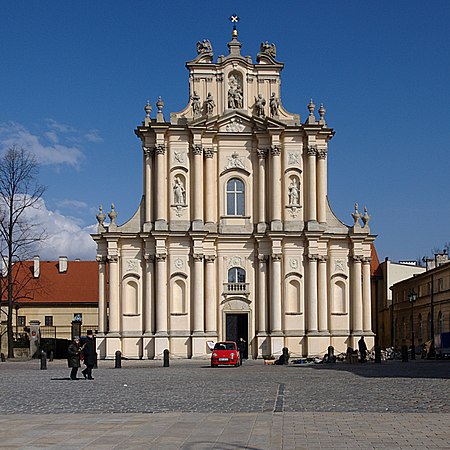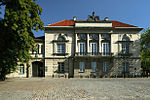Visitationist Church
1651 establishments in the Polish–Lithuanian Commonwealth17th-century Roman Catholic church buildings in Poland18th-century Roman Catholic church buildings in PolandRococo architecture in WarsawRoman Catholic churches completed in 1761 ... and 1 more
Roman Catholic churches in Warsaw

Church of St. Joseph of the Visitationists (Polish: Kościół Opieki św. Józefa w Warszawie) commonly known as the Visitationist Church (Polish: Kościół Wizytek) is a Roman Catholic church in Warsaw, Poland, situated at Krakowskie Przedmieście 34. One of the most notable rococo churches in Poland's capital, its construction was begun in 1664 and completed in 1761.
Excerpt from the Wikipedia article Visitationist Church (License: CC BY-SA 3.0, Authors, Images).Visitationist Church
Krakowskie Przedmieście, Warsaw Śródmieście (Warsaw)
Geographical coordinates (GPS) Address External links Nearby Places Show on map
Geographical coordinates (GPS)
| Latitude | Longitude |
|---|---|
| N 52.241111111111 ° | E 21.0175 ° |
Address
Kościół Wizytek
Krakowskie Przedmieście 34
00-325 Warsaw, Śródmieście (Warsaw)
Masovian Voivodeship, Poland
Open on Google Maps










